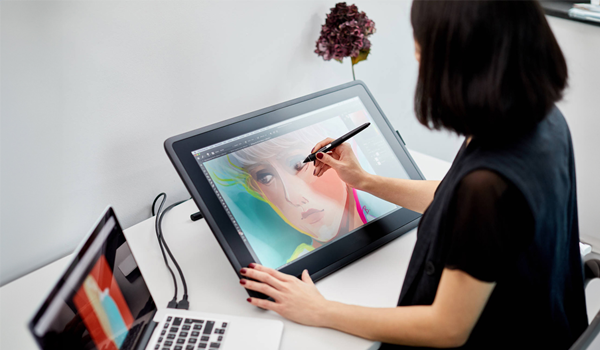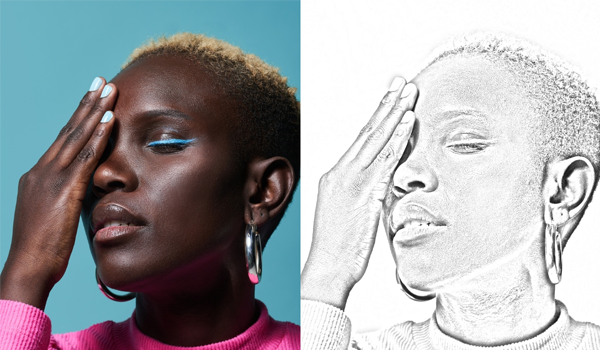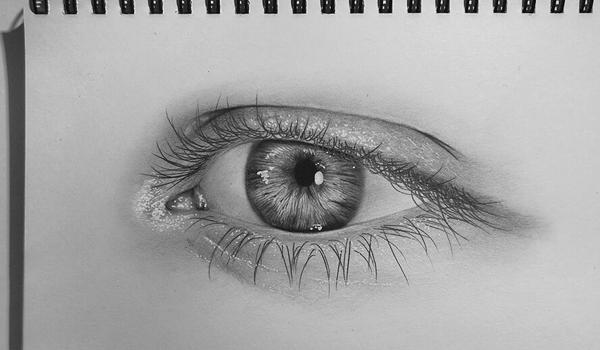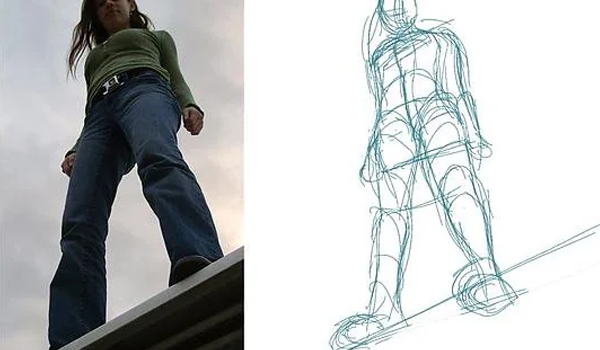When it comes to creating stunning digital art, professional drawing tablets have become essential tools for artists, designers, and illustrators. With the right tablet, the creative possibilities are endless, allowing for greater precision, flexibility, and an overall enhanced workflow. Whether you’re an experienced professional or an aspiring artist, choosing the right professional drawing tablet can significantly impact your work. This blog post will guide you through the key aspects of these devices and help you make an informed decision.
Introduction to Professional Drawing Tablets
In the realm of digital artistry, professional drawing tablets serve as the bridge between your imagination and the digital canvas. Unlike standard tablets, these devices are specifically designed with artists in mind, offering features that cater to intricate design work, from high-resolution displays to advanced stylus technology. With the right professional drawing tablet, artists can achieve a level of detail and expressiveness that rivals traditional mediums.
Understanding the characteristics that define a professional drawing tablet is crucial, especially for those seeking to elevate their craft. This introduction will lay the foundation for exploring what makes these tools indispensable and how to choose one that best suits your creative needs.
What Defines a Professional Drawing Tablet?
A professional drawing tablet is defined by several key features that distinguish it from consumer-grade tablets. Firstly, these tablets often come with a highly sensitive stylus that can detect thousands of pressure levels, typically around 8,192, allowing for nuanced strokes that reflect the natural variability of hand pressure. This sensitivity is essential for creating detailed work, as it enables artists to control line thickness, opacity, and texture with precision.
Additionally, the display quality of professional drawing tablets is another critical factor. These devices usually offer high-resolution screens, with many professional models featuring 2K or even 4K displays. Such resolution is vital for detailed work, as it allows artists to zoom in on their projects without losing clarity. Some of the top models, like the Wacom Cintiq and Huion Kamvas, also provide high color accuracy, often covering over 90% of the Adobe RGB spectrum, which is crucial for professional-grade color work.
Lastly, professional drawing tablets often include customizable shortcut keys, advanced multitouch capabilities, and ergonomic designs that enhance the overall user experience. These features are designed to streamline the creative process, enabling artists to focus more on their art and less on the mechanics of their tools.
The Importance of Choosing the Right Drawing Tablet for Artists
Selecting the right professional drawing tablet is a pivotal decision for any artist. The tablet you choose can either enhance your creative process or hinder it. A tablet with insufficient pressure sensitivity or poor color accuracy can frustrate an artist and potentially compromise the quality of their work.
Moreover, the size of the tablet is also an important consideration. Larger tablets like the XP-Pen Artist 24 Pro offer expansive drawing areas, which are ideal for artists who need a lot of space to work on detailed pieces. On the other hand, smaller tablets are more portable and can be better suited for artists who work on the go or have limited desk space.
Another critical aspect is the tablet’s compatibility with your existing setup. Most professional drawing tablets are designed to work seamlessly with both Mac and Windows systems, and they often support popular digital art software like Adobe Photoshop, Illustrator, and Corel Painter. Ensuring that the tablet you choose integrates well with your preferred software can save you time and prevent technical headaches down the road.
In summary, a professional drawing tablet is more than just a tool; it’s an extension of the artist’s creative process. By carefully considering factors such as pressure sensitivity, display quality, size, and compatibility, you can choose a tablet that not only meets your current needs but also grows with you as you advance in your artistic journey.
Key Features to Look for in Professional Drawing Tablets
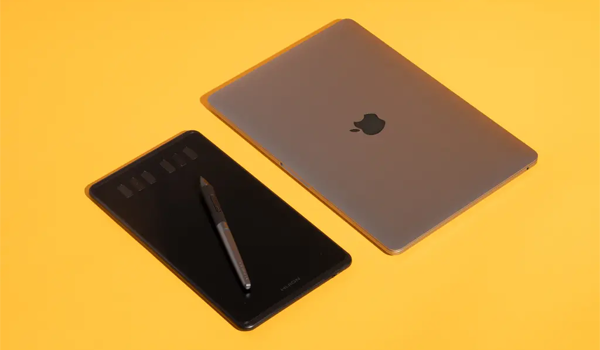
When selecting a professional drawing tablet, it’s essential to understand the key features that can make a significant difference in your creative workflow. These features determine not only the quality of your artwork but also the ease with which you can translate your ideas onto the digital canvas. From display quality to stylus technology, each aspect plays a crucial role in enhancing your artistic capabilities. In this section, we’ll delve into the most important factors you should consider to ensure that your chosen tablet meets your artistic needs.
Display Quality and Color Accuracy
The display is one of the most critical components of any professional drawing tablet. High resolution is necessary for detailed work, with many professional models offering 2K or 4K displays. This level of resolution ensures that even the smallest details are visible, allowing for precise edits and adjustments. Additionally, color accuracy is paramount, particularly for artists who work in fields like digital painting, graphic design, or animation, where color precision is crucial. Professional tablets typically cover a wide color gamut, such as 90% or more of the Adobe RGB spectrum, which ensures that the colors you see on screen closely match the final output.
Pressure Sensitivity and Responsiveness
Pressure sensitivity refers to how well the tablet can detect variations in the pressure applied by the stylus. A professional drawing tablet usually offers around 8,192 levels of pressure sensitivity, which allows artists to create lines of varying thickness and opacity, mimicking the behavior of traditional drawing tools like pencils and brushes. Responsiveness, or how quickly the tablet reacts to the stylus movements, is equally important, as it affects the smoothness and accuracy of your strokes. High responsiveness ensures that there is no noticeable lag between the movement of your hand and the appearance of your lines on the screen, making the drawing experience more natural and intuitive.
Stylus Technology and Customization
The stylus is the primary tool you’ll use with a professional drawing tablet, so its technology and customization options are crucial. Modern styluses are designed to offer a natural drawing experience, often featuring tilt recognition and rotation sensitivity. These features allow for more dynamic and varied strokes, enhancing the realism of digital art. Moreover, many styluses are battery-free and offer a comfortable grip, reducing hand fatigue during long drawing sessions. Customization options, such as interchangeable nibs and adjustable pressure settings, allow artists to tailor the stylus to their specific needs, ensuring maximum comfort and efficiency.
Types of Stylus
Styluses come in various types, each offering different features and levels of functionality. The most common types include battery-powered styluses, battery-free styluses, and electromagnetic resonance (EMR) styluses. Battery-free styluses, such as those used by Wacom, are popular among professionals because they are lightweight and require no charging, making them convenient for long work sessions. EMR styluses are also widely used, offering high sensitivity and precision without the need for batteries, thanks to their reliance on electromagnetic fields.
Customizable Buttons and Shortcuts
Many professional drawing tablets come with customizable buttons and shortcuts that allow artists to streamline their workflow. These buttons can be programmed to perform various functions, such as undoing a stroke, switching tools, or zooming in and out. By customizing these shortcuts, artists can significantly reduce the time spent navigating through menus, allowing them to focus more on the creative process. Some tablets also include touch rings or dials, which provide even more flexibility by allowing artists to control features like brush size or canvas rotation with a simple gesture.
Top Professional Drawing Tablets in the Market
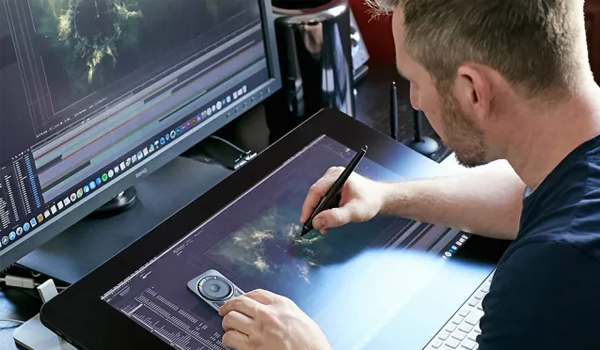
Choosing the best professional drawing tablet depends heavily on your specific needs as an artist. Whether you’re focused on 2D illustrations, 3D modeling, or just getting started with professional-grade tools, there’s a tablet that fits your creative process. In this section, we will explore the top professional drawing tablets currently available, categorizing them based on their strengths in different creative disciplines. Whether you’re a seasoned artist looking for the ultimate tool or an aspiring professional seeking budget-friendly options, you’ll find valuable insights here to guide your purchase.
Best Tablets for 2D Illustrations
For artists specializing in 2D illustrations, tablets with high-resolution displays, excellent color accuracy, and responsive styluses are crucial. The Wacom Cintiq 22, for example, is highly regarded for its vibrant screen and precise stylus performance, making it ideal for detailed 2D work. Another strong contender is the Huion Kamvas Pro 24, which offers a 4K resolution display and exceptional color reproduction, providing a detailed and accurate canvas for illustrators.
Ideal Tablets for 3D Modeling and Animation
3D modeling and animation require a professional drawing tablet that not only handles complex graphics but also integrates well with 3D software. The Wacom Intuos Pro, known for its large active area and pressure-sensitive pen, is a favorite among 3D artists due to its precision and control. For those who prefer a screen-based tablet, the XP-Pen Artist 24 Pro offers a large 23.8-inch display with 2K resolution, perfect for visualizing 3D models in detail. Additionally, its customizable shortcut keys and dial make it easier to navigate and manipulate 3D environments.
Budget-Friendly Options for Aspiring Professionals
Not every artist is ready to invest in the highest-end models, but that doesn’t mean they need to sacrifice quality. Budget-friendly professional drawing tablets like the Wacom Intuos Pro Small and Huion Kamvas 13 offer excellent value with sufficient features for professional work. These tablets provide a good balance between price and performance, making them suitable for aspiring professionals who need reliable tools without breaking the bank.
Entry-Level Professional Tablets
Entry-level tablets like the Huion Inspiroy H640P and XP-Pen Deco 01 V2 are great starting points for those new to professional drawing tablets. These models offer essential features like customizable buttons and a responsive stylus, making them perfect for students and hobbyists transitioning to professional work. They are compact, portable, and compatible with most digital art software, providing a solid foundation for developing your skills.
Mid-Range Tablets with Advanced Features
For artists looking to step up from entry-level devices without diving into the highest price brackets, mid-range tablets such as the Wacom Intuos Pro Medium and the XP-Pen Artist 15.6 Pro are excellent choices. These tablets include advanced features like multi-touch gestures, higher pressure sensitivity, and larger drawing areas. They strike a perfect balance between affordability and professional-grade functionality, making them a popular choice among growing professionals.
How to Choose the Right Tablet for Your Needs
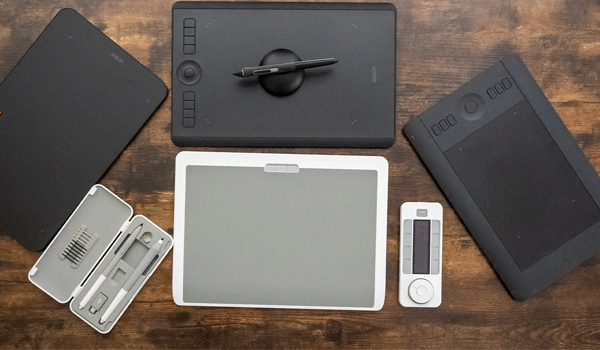
Selecting the perfect professional drawing tablet can be daunting, especially with the wide range of options available on the market. To make an informed decision, it’s essential to consider how the tablet will fit into your specific artistic workflow, as well as comparing technical specifications and user feedback. Additionally, thinking about the long-term value of your investment will ensure that the tablet you choose continues to meet your needs as your skills and projects evolve. This section will guide you through these considerations to help you choose a tablet that aligns perfectly with your creative goals.
Understanding Your Artistic Workflow
Your artistic workflow is the backbone of your creative process, and the right professional drawing tablet should complement and enhance it. For instance, if you work primarily with detailed 2D illustrations, you’ll need a tablet with high resolution and excellent color accuracy to ensure that every detail is captured accurately. On the other hand, if your work involves animation or 3D modeling, you might prioritize a tablet with a larger screen, customizable buttons, and seamless software integration for smoother workflow management.
Identifying whether you need a portable device or a more robust, stationary setup is also crucial. If you frequently work on the go, a lightweight tablet with a compact design and a responsive stylus might be your best option. Conversely, if you have a dedicated workspace, investing in a larger tablet with a higher resolution screen and advanced features might be more beneficial.
Comparing Specs and User Reviews
When choosing a professional drawing tablet, comparing the specifications of different models can provide insight into their performance capabilities. Important specs to consider include screen resolution, pressure sensitivity, stylus technology, and connectivity options. High-end tablets often feature 4K displays, over 8,192 levels of pressure sensitivity, and battery-free styluses, which offer a more natural drawing experience.
User reviews are equally important as they provide real-world insights into how a tablet performs over time. Pay attention to feedback on the tablet’s durability, ease of use, and any potential issues that might not be apparent from the specs alone. Reviews from other professionals who have used the tablet in similar workflows to yours can be particularly valuable in guiding your decision.
Long-Term Investment Considerations
Investing in a professional drawing tablet is a significant decision, and it’s essential to think about its long-term value. Consider whether the tablet will meet your needs as you advance in your career and take on more complex projects. Tablets that offer software updates, extensive warranty options, and compatibility with a wide range of accessories are often better long-term investments.
Also, consider the tablet’s compatibility with the software you use or plan to use in the future. Ensuring that your tablet integrates smoothly with industry-standard software like Adobe Creative Suite, Corel Painter, or 3D modeling programs can save you from future headaches and additional costs.
By taking into account your workflow, comparing specifications and user feedback, and considering the long-term value of the tablet, you can choose a professional drawing tablet that not only meets your current needs but also supports your growth as an artist.
Setting Up and Optimizing Your Drawing Tablet
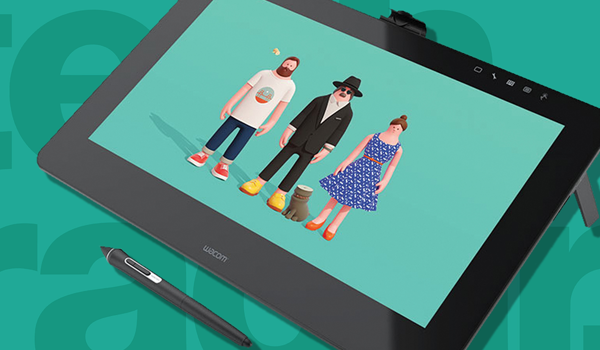
After selecting the perfect professional drawing tablet for your needs, the next crucial step is setting it up for optimal performance. Proper installation, customization, and regular maintenance will ensure that your tablet operates smoothly and enhances your creative workflow. In this section, we’ll guide you through the essential steps to get your tablet up and running, as well as tips for keeping it in top condition over time.
Installing Drivers and Software
The first step in setting up your professional drawing tablet is to install the necessary drivers and software. These drivers ensure that your tablet communicates correctly with your computer and that all features, such as pressure sensitivity and customizable buttons, function as intended. It’s important to download the latest drivers from the manufacturer’s website to avoid any compatibility issues. Additionally, installing the tablet’s proprietary software allows you to access advanced settings, such as pen calibration and shortcut customization, which are essential for optimizing your workflow.
After installing the drivers, you should also check for any firmware updates that might improve your tablet’s performance or add new features. Keeping your software and drivers updated ensures that your tablet operates at its best and is compatible with the latest design software.
Customizing the Tablet for Optimal Use
Customizing your professional drawing tablet is a critical step in tailoring it to your specific artistic needs. Start by adjusting the pressure sensitivity of the stylus to match your drawing style. If you prefer light strokes, you might want to increase the sensitivity, whereas those who press harder might reduce it. Most tablets allow you to save different profiles, which is useful if you switch between different types of projects or software.
You can also program the tablet’s customizable buttons and shortcuts to streamline your workflow. For example, setting shortcuts for frequently used commands, such as undo, redo, or brush size adjustment, can save you significant time. If your tablet has a touch ring or dial, you can assign it to control functions like zooming or rotating the canvas, making your work process smoother and more intuitive.
Regular Maintenance and Care
To keep your professional drawing tablet in optimal condition, regular maintenance is essential. Begin by cleaning the surface of the tablet regularly with a soft, lint-free cloth to remove dust and smudges. Avoid using harsh chemicals or abrasive materials that could damage the screen or the tablet’s body.
Inspect the stylus nib periodically, as it can wear down with use, especially if you work with heavy pressure. Replacing the nib when it starts to show signs of wear will help maintain the accuracy of your strokes and prevent potential damage to the tablet’s surface.
Additionally, ensure that your tablet is stored in a safe, dry place when not in use, and consider using a protective cover to shield the screen from scratches. Regularly check for software updates, as these can include important fixes and performance enhancements that keep your tablet running smoothly.
By following these setup and maintenance tips, you can ensure that your professional drawing tablet remains a reliable tool in your creative arsenal, ready to bring your artistic visions to life with precision and ease.
Conclusion
Choosing the right professional drawing tablet is a pivotal decision that can greatly influence your creative output and efficiency. From understanding your artistic workflow to carefully considering the tablet’s features, specs, and user reviews, each step in the selection process is crucial. The tablet you choose should not only meet your current needs but also be a valuable tool as you grow and evolve as an artist.
Once you’ve selected your tablet, proper setup and regular maintenance are key to ensuring it remains a reliable part of your creative process. By customizing the tablet to your workflow and keeping it in good condition, you can maximize its lifespan and performance.
In the rapidly evolving world of digital art, investing in the right tools will empower you to create with confidence and precision. Whether you’re an experienced professional or just starting your journey, the right professional drawing tablet can make all the difference in bringing your artistic visions to life.
